 Those gardeners who grow roses in the open ground on their garden plot know that the flower is not so easy to care for. A major role for roses is played by dressings, they vary in composition and are applied for certain periods.
Those gardeners who grow roses in the open ground on their garden plot know that the flower is not so easy to care for. A major role for roses is played by dressings, they vary in composition and are applied for certain periods.
If you follow the correct technique for growing plants, flowering roses will occur year-round and plentiful. Top dressing should be used with caution and in no case should be abused, since the saturation of the earth with fertilizers sometimes has irreversible consequences, accompanied by the death of the entire flower garden.
Content
Varieties of dressing and time of use
Organic and mineral fertilizers based on potassium, manganese, boron, zinc, as well as nitrogen-containing additives - ammonium nitrate, nitrophosphate are often used as additives for growing rosary. The rose responds well to watering with fresh or rotted chicken droppings, mullein. Often used and folk remedies: onion infusions, yeast.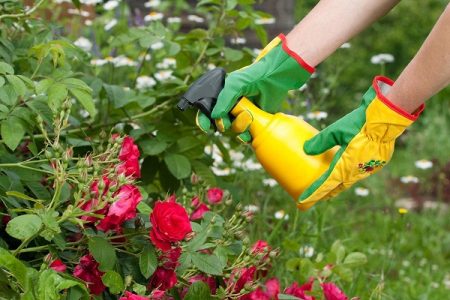
Conditionally dressing roses is carried out in the spring once and two or three times in the summer. In autumn, roses are fed at the discretion of the gardener. Autumn top dressing helps the plant tolerate winter more easily, and will also provide it with enhanced immune ability.
There is an unwritten rule when using supplements. Nitrogen fertilizers are applied only during the greening of the rose, that is, in the spring. Nitrogen provides the formation of a healthy stem, gardening of shoots, provokes leaf growth. In the summer phase, additives based on phosphorus and potassium are used. They are responsible for the formation of buds, and also affect the intensity of the color and the immune properties of the plant as a whole. Complex fertilizers and folk remedies are applied to the soil in the summer 2-3 times for the entire season. Such use of fertilizers is enough for roses to bloom lushly and for a long time. The calendar for feeding roses is presented in table 1 below.
Table 1 The schedule of dressing roses
| Fertilizer name | March | April | May | June | July | August | September |
| Nitrogen Fertilizers | + | + | |||||
| Organic supplements | + | + | |||||
| Complex fertilizers | + | + | + | + | |||
| Potash and phosphorus fertilizers | + | + | + | + | |||
| Mullein, chicken droppings | + | + | + | + | + | + |
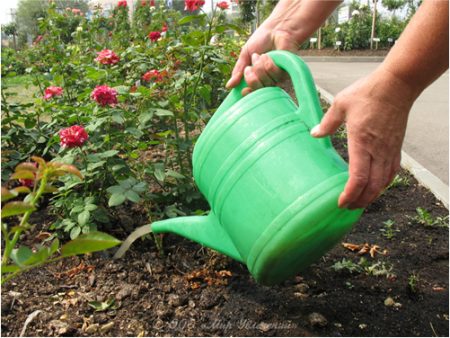
How to feed
There are several ways to make fertilizing:
Dry application
A groove is made near the rose so that it bends around the plant from all sides. The distance from the stem should be at least 5 centimeters. A thin layer of top dressing is poured into the recess, and then the earth is poured on top. With rain or another watering, fertilizers will dissolve and nourish the root system of the flower.
Fertilizer spraying
Foliar application of fertilizers allows you to absorb nutrients through the leaves and stem of the plant. This method is safe, since the root system is not exposed to direct and sometimes aggressive substances.
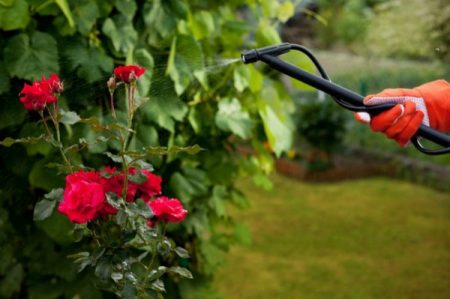
Standard way
Fertilizers are diluted with water and with a certain frequency are applied under the root of the plant. An easy-to-use method allows you to deliver the necessary trace elements directly to the roots themselves. However, sometimes the use of this method can be risky due to the high concentration of substances.It is necessary to breed fertilizers in water strictly in the declared proportion of fertilizer.
Feeding with saltpeter and mineral fertilizers
In spring, when the temperature of the earth warms up to plus 10 degrees and above, they begin to feed. The first top dressing is carried out using ammonium nitrate. It is distributed in the soil at the rate of 20-30 grams of dry powder per 1 square meter of land. Especially nitrate has a positive effect on already mature roses, which bloomed more than once in previous years.
Urea (urea) is introduced in the spring, as it contains a lot of nitrogen. Phosphorus-containing additives are combined perfectly with urea. Powders can simply be distributed in the soil at the rate of 20 grams per square meter of land.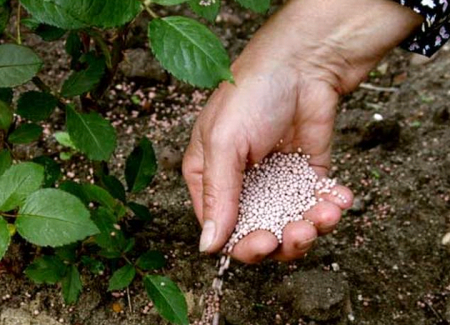
In addition to nitrate, at the end of May, before the start of the budding phase, the next top dressing is carried out using potassium and phosphorus. 10-15 grams of superphosphate are mixed with the same amount of potassium sulfate or any potassium salt. Dissolve a mixture of powders in 10 liters of water and feed the rose. In June, top dressing is repeated.
Feeding with calcium nitrate in combination with superphosphate has a powerful nutritional effect on the rose bush. Pour boiling water over 10 grams of superphosphate and cool, then dissolve in 10 liters of water and add 10 grams of calcium nitrate powder. Top dressing is applied to the leaves of the rose and its stem.
In the summer, during the hottest time, when the buds of the rose begin to be laid, you can use an additive based on stove ash. Its rich organic composition favorably affects the flowering of roses and provides flowers with a long lifespan. Half a glass of ash is bred in a bucket of cool water and watered the rose under the root. Ash can also be used for foliar top dressing: a glass of ash is bred in a bucket of water and a flower is sprayed.
The use of complex additives
Recently, already balanced fertilizer formulations have begun to spread. Their use is very convenient, does not require weighing or strict adherence to the proportions between the elements. Almost all supplements are available in liquid form and dissolve perfectly in water, creating a uniform nutritional composition.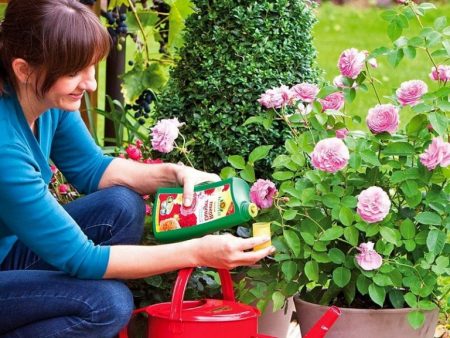
It is necessary to breed the additive strictly according to the specified instructions to it, it is usually given on the back of the bottle or container. The most popular additives for feeding roses are Agricola, Bud Plus, Zircon, Pocon, Watering Can. The composition of fertilizers already contains such useful and important elements as magnesium, iron, phosphorus, potassium, calcium, nitrogen, boron. When using complex additives, the use of other fertilizers is excluded so that there is no saturation of the soil.
The use of organic fertilizers
Feeding with mullein and chicken droppings can be used annually, regardless of the time of year. Roses respond positively to the introduction of organic dressing, well bush and bloom. Mullein is important to use rotten. Manure is introduced as mulch, placed next to the stem of the rose, and then mixed with the top layer of the earth. Manure can be diluted with water in a proportion of 1:10 and water the composition of the rose. Before watering, manure should be allowed to brew for 1-2 weeks.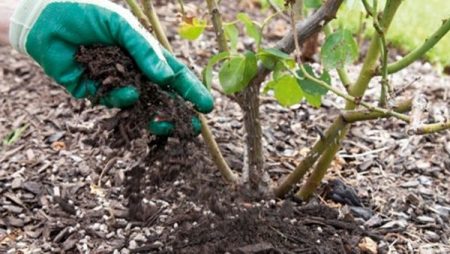
Chicken droppings should be used more carefully than mullein - fertilizer can burn the root system. If chicken droppings are fresh, they are bred in water in a proportion of 1:20. The overripe litter can be bred twice as intensive: a part of the litter is added to 10 parts of water. Fertilized with fertilizers in the morning before lunch.
The use of folk remedies
In addition to chemically active additives, folk remedies still have not lost their relevance. They have been used for many decades. Often, gardeners use watering infusion on herbs before flowering rosaries. Freshly cut grass and tops are poured into the barrel to half its volume and poured with water to the very top. Add to the barrel the crushed eggshell in the amount of 20-30 grams and allow the contents to infuse for 2 weeks. Watered roses with filtered solution in the morning 1 time per week.
According to some gardeners who have been growing roses with success for more than a dozen years, flowers from the use of yeast grow especially well. Dry yeast (1 gram) is dissolved in a liter of water and a teaspoon of sugar is added. Put the contents in a warm place and insist an hour. Then the liquid mixture is poured under the root of the flower until noon, but not in the morning. Feeding with yeast is used no more than 2 times per season, as over time they reduce the content of minerals in the soil.
Vodka, oddly enough, effectively affects flowers and helps them survive frosts, and also strengthens the immune system. In addition to protection against frost, vodka has an antibacterial effect, prevents the formation of fungal diseases on the plant. To prepare the solution you will need a glass of vodka. It is dissolved in 10 liters of water and watered the bush. Vodka also keeps buds blooming for several days longer than usual.
The use of fertilizers will ensure the creation of beauty in the garden, but it is necessary to use additives carefully. If the soil in the garden is rich in nutrients, the need to use fertilizers disappears or decreases several times. It is important to remember that in the first year of life of a rose, it is better to refrain from dressing or to apply only summer supplements that stimulate flowering. Mature flowers are fed annually, but not more often 3-4 times a season. Following these simple recommendations will help in breeding royal flowers that will attract the attention of everyone around.

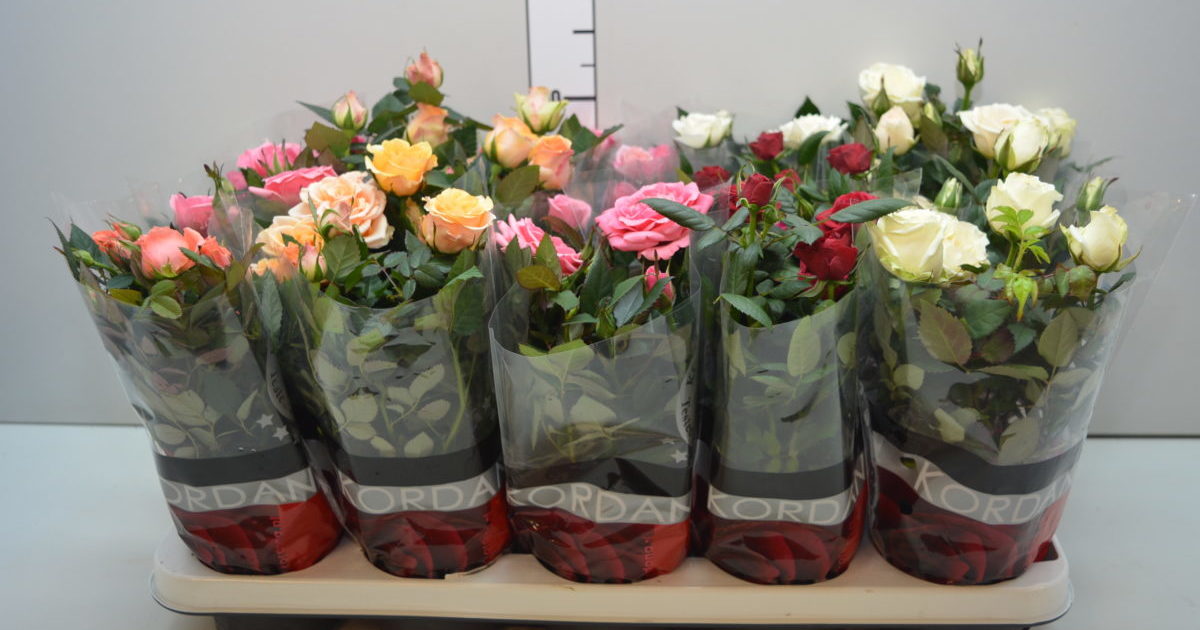
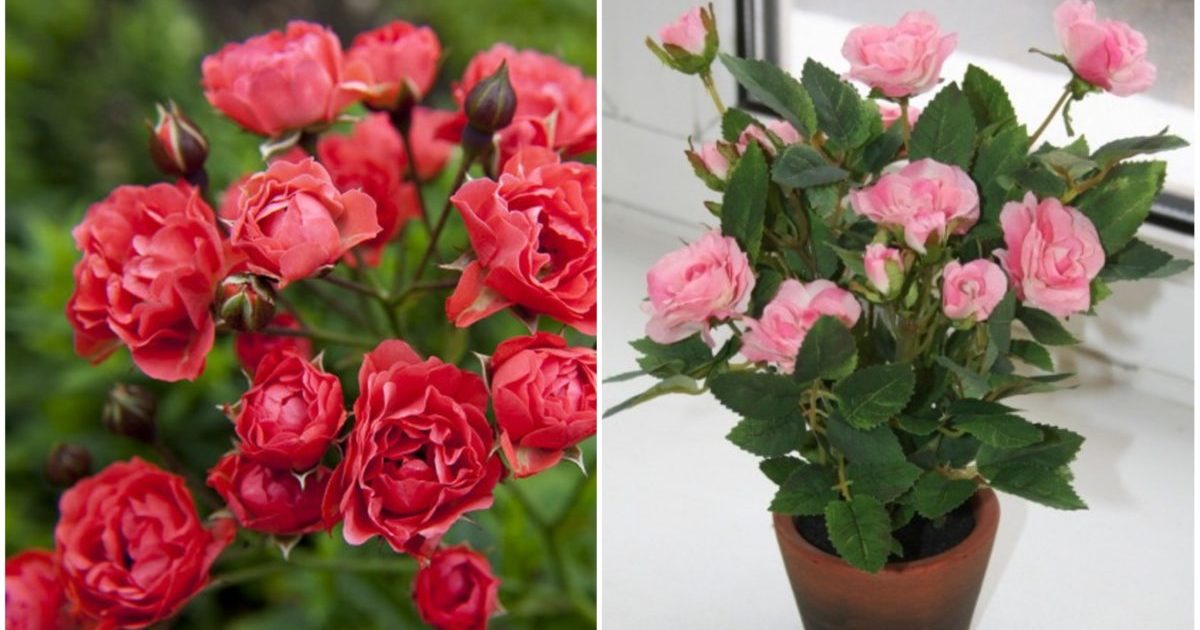
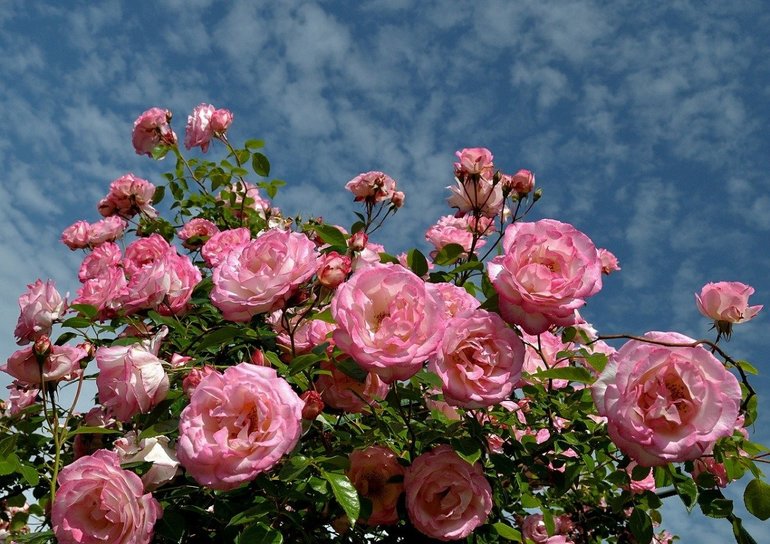
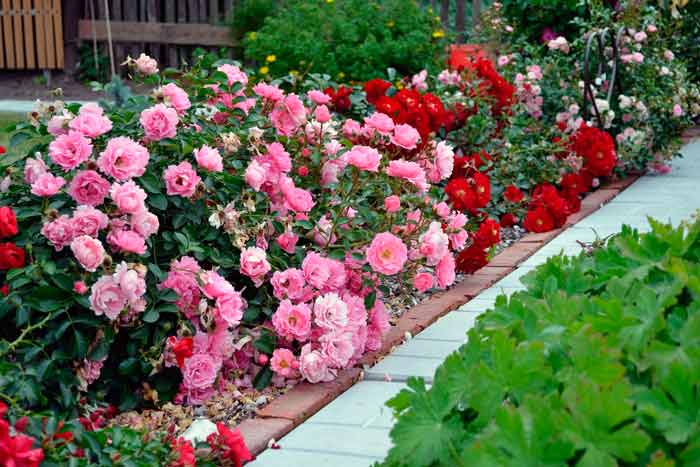 Shelter of roses for the winter: at what temperature does the robot hold
Shelter of roses for the winter: at what temperature does the robot hold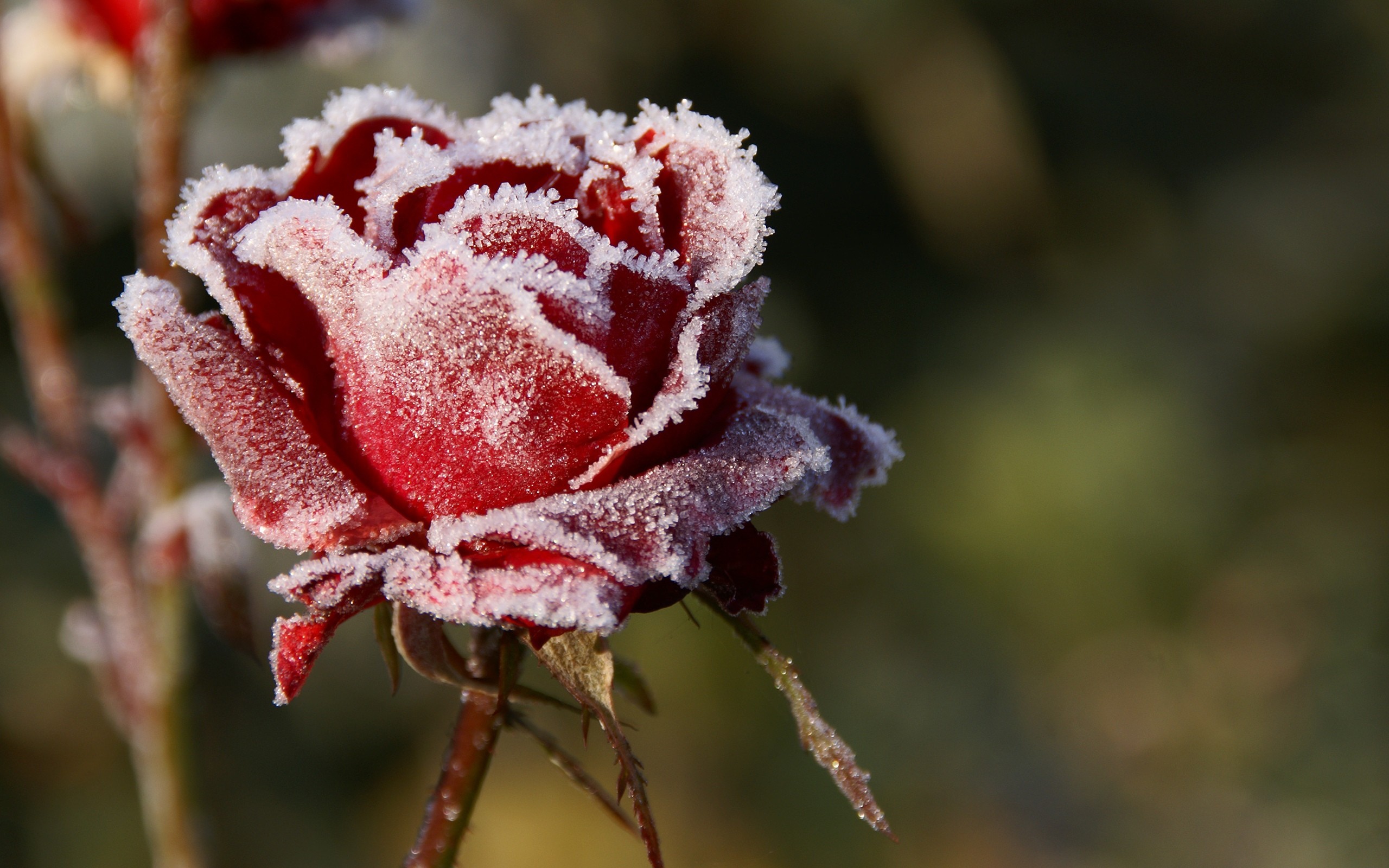 How to prune roses in the fall: timing, pruning rules, pros and cons
How to prune roses in the fall: timing, pruning rules, pros and cons What are the varieties and types of roses
What are the varieties and types of roses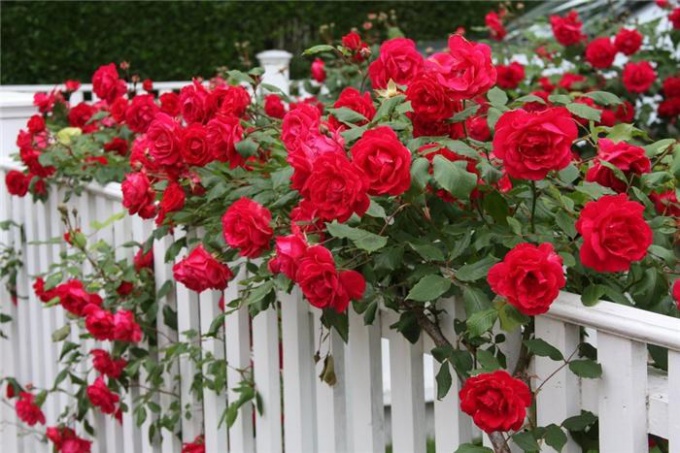 How to process roses with iron sulfate in autumn: proportions, advantages and disadvantages
How to process roses with iron sulfate in autumn: proportions, advantages and disadvantages
Helena
Thank you for the article!!! Very instructive ...
Like
Instructive article thanks
Natalya
Thanks so much for the article. We just do everything on the “machine”, taking all the household chores on ourselves.